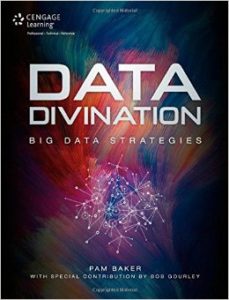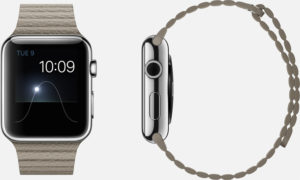 You’ve gotta read “Data Divination: Big Data Strategies,” Pam Baker’s new book about Big Data.
You’ve gotta read “Data Divination: Big Data Strategies,” Pam Baker’s new book about Big Data.
Actually, let me change my recommendation. If you are a techie and you are looking for suggestions on how to configure your Hadoop installation or optimize the storage throughput in your NAS array, this isn’t the book for you. Rather, this is the book for your business-side manager or partner, who is looking to understand not only what Big Data is, but really really learn how to apply data analysis to business problems.
One of the challenges with Big Data is simply understanding it. The phrase is extremely broad and quite nebulous. Yet behind the overhyping of Big Data, there are genuine use cases that demonstrate that looking at your business’ data in a new way can transform your business. It is real, and it is true.
Bake is the editor of the “Fierce Big Data” website. She deconstructs the concept by dispensing with the jargon and the, well, overly smug Big Data worship that one finds in a lot of literature and pushed out by the vendors. With a breezy style that reflects her background as a technology journalist, Baker uses clear examples and lots of interviews to make her points.
What will you learn? To start with, “Data Divination” teaches you how to ask good questions. After all, if you don’t ask, you won’t learn anything from all that data and all those reports. Whether it’s predictive analytics or trend spotting or real-time analysis, she helps you understand which data is valuable and which isn’t. That’s why this book is best for the executive and business-side managers, who are the ultimate beneficiaries of your enterprise’s Big Data investments.
This book goes beyond other books on the subject, which could generally be summarized either as too fluffy and cheerleading, or as myopically focused on implementation details of specific Big Data architectures. For example, there is a lengthy chapter on the privacy implications of data gathering and data analysis, the sort of chapter that a journalist would write, but an engineer wouldn’t even think about.
Once you’ve finished with the basics, Baker jumps into several fascinating use cases: in healthcare, in the security industry, in government and law enforcement, in small business, in agriculture, in transportation, in energy, in retail, in manufacturing, and so on. Those are the most interesting parts of the book, and each use had takeaways that could apply to any industry. Baker is to be commended for digging into the noteworthy challenges that Big Data attempts to help businesses overcome.
It’s a good book. Read it. And tell your business partner, CIO or even CEO to read it too.

 Thirty seconds. That’s about how long a mobile user will spend with your game before deciding if he or she will continue using it. Thirty seconds. Maybe a minute. If you haven’t engaged the customer by then, forget it.
Thirty seconds. That’s about how long a mobile user will spend with your game before deciding if he or she will continue using it. Thirty seconds. Maybe a minute. If you haven’t engaged the customer by then, forget it. First Impressions of the
First Impressions of the  Once upon a time, back when dinosaurs roamed the planet, I learned COBOL. While I never wrote any deployed applications in the language, I did use it to teach an undergraduate course in computer science for business majors, back in the early 1980s. Those poor students, who submitted their programs on punch cards for an IBM System/370, complained that the class was the most time-consuming of their undergraduate studies, often requiring lots of late nights at the campus computer center.
Once upon a time, back when dinosaurs roamed the planet, I learned COBOL. While I never wrote any deployed applications in the language, I did use it to teach an undergraduate course in computer science for business majors, back in the early 1980s. Those poor students, who submitted their programs on punch cards for an IBM System/370, complained that the class was the most time-consuming of their undergraduate studies, often requiring lots of late nights at the campus computer center. “My name is Patricia from the Bank of America fraud prevention department. This important message is for Mr. Alan Zeichick. We are calling to verify some potentially suspicious activity on your account. It is very important that we speak with you.”
“My name is Patricia from the Bank of America fraud prevention department. This important message is for Mr. Alan Zeichick. We are calling to verify some potentially suspicious activity on your account. It is very important that we speak with you.”